Why does my pumpkin pie crack on top? Making a pumpkin pie might look easy, but little things like overbaking, overmixing, or not letting the pie cool down slowly can cause unwanted cracks. These small mistakes can mess up our pie, making it less than perfect. Let’s look closer at these issues and figure out how to keep our pies looking and tasting great!
Common Reasons Why Pumpkin Pies Crack
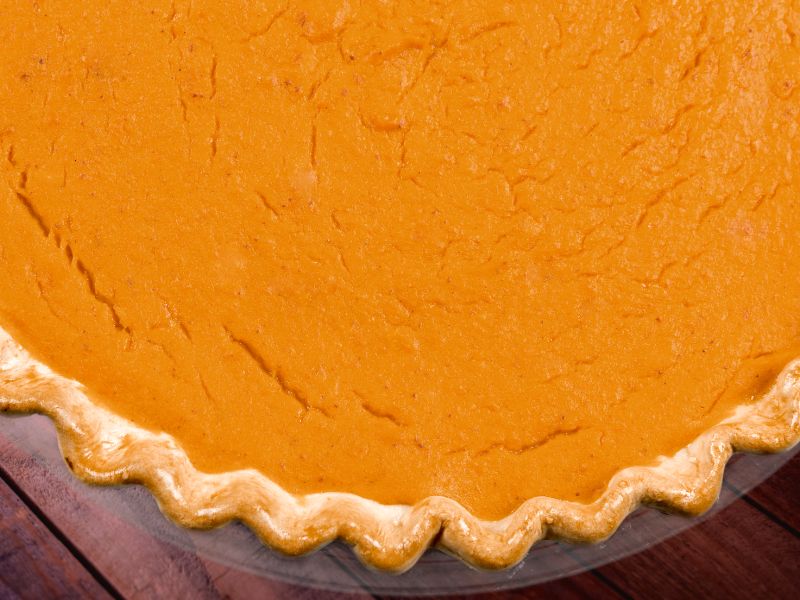
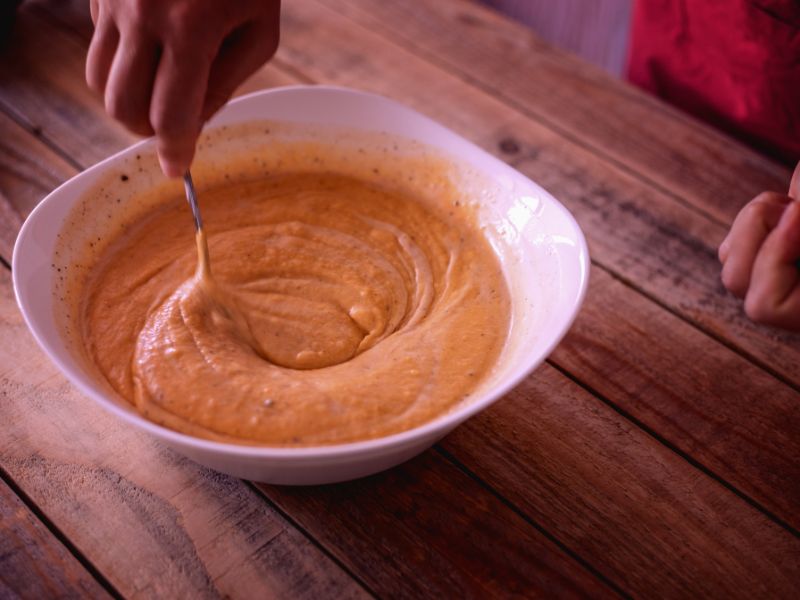
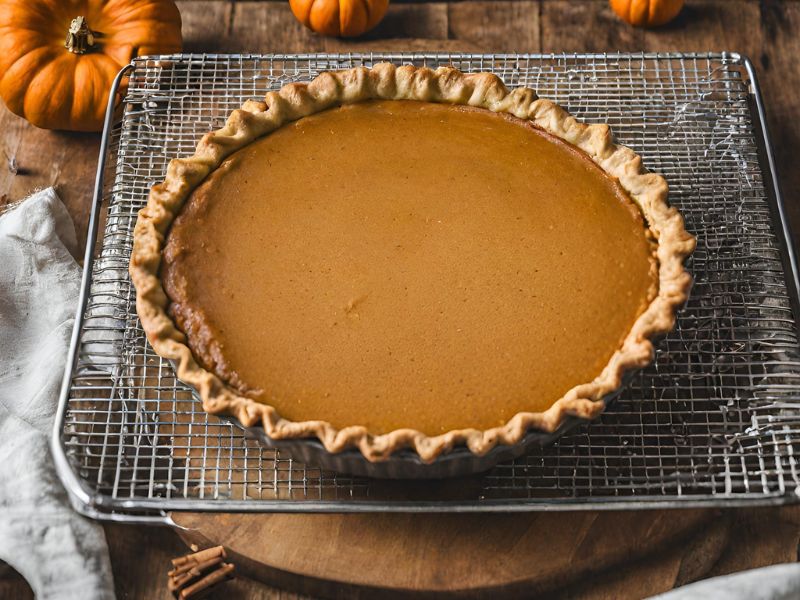
“Why does my pumpkin pie crack on top?” It’s a question many bakers ask and it usually happens for a few simple reasons. First, if the pie bakes too long, it gets too firm and cracks. Second, mixing the filling too much can put air inside, making cracks when it bakes and cools. Lastly, it can also crack if the pie doesn’t cool down slowly and completely. Keeping an eye on these easy-to-miss steps will help you bake a smooth, yummy pumpkin pie.
Overbaking
Overbaking can be a common culprit behind those unwanted cracks in a pumpkin pie. The ideal texture of a perfectly baked pie is one where the center is still a bit wobbly, retaining that signature custard-like consistency.
However, if left in the oven for too long, the pie becomes too firm, losing its desired texture and becoming more susceptible to cracking.
So, how can you spot if your pie is just right? Pay attention to visual cues: the edges of the pie should be set, while the center should have a slight jiggle to it. A handy tip to monitor your pie without disrupting the baking process is to use the oven light.
This allows you to check on the pie’s progress without opening the oven door, which can cause temperature changes and potentially affect the outcome.
Overmixing the Filling
Another factor that can lead to cracks in your pumpkin pie is the unintentional introduction of air into the filling. This often happens when the filling is mixed too vigorously or whisked too aggressively.
As the pie bakes, this trapped air expands and then contracts as the pie cools, resulting in those pesky cracks.
So, how can you ensure the right consistency for your filling? It’s important to aim for a mixture that’s smooth but not frothy. A good tip to get this is to use a spatula or a hand whisk, mixing just until the ingredients are combined.
This approach helps prevent overmixing and reduces the chances of introducing unwanted air.
Rapid Cooling
Quick temperature changes can pose a risk to the smooth surface of your pumpkin pie. This phenomenon, known as thermal shock, happens when the pie is moved from a hot oven to a much cooler environment, causing it to shrink rapidly, which can lead to cracks.
A useful tip to avoid this is to allow the pie to cool gradually in the oven with the door slightly ajar. When it’s time to remove the pie, make sure it cools first at room temperature before transferring it to the fridge. Being patient and allowing the pie enough time to cool slowly will help keep the top smooth and a tasty texture.
Tips and Tricks to Prevent Cracking
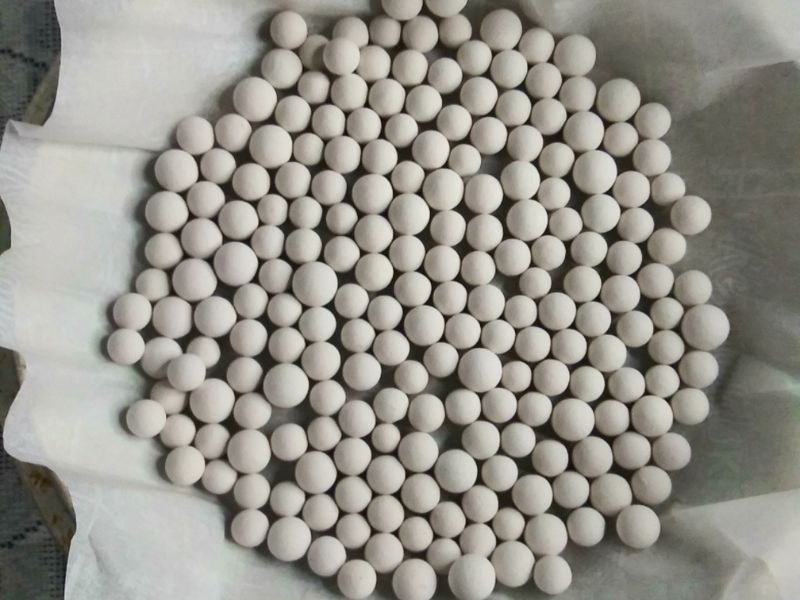
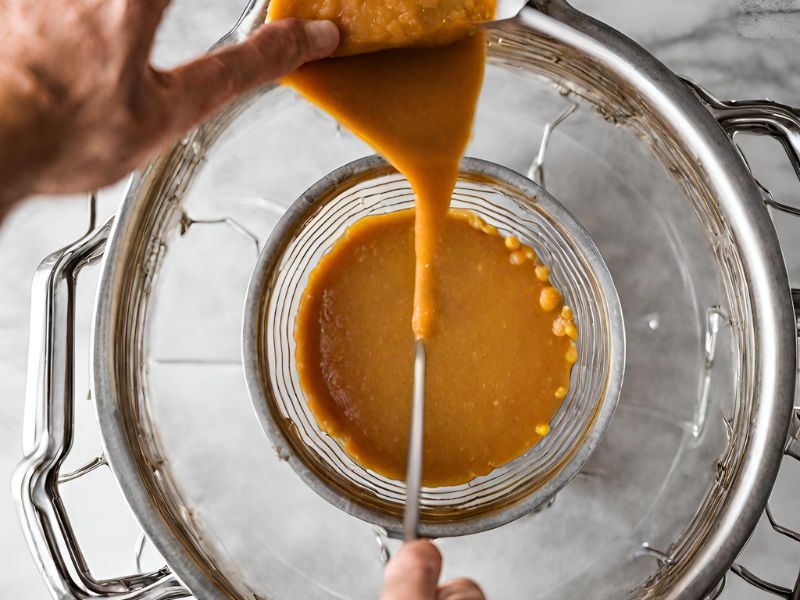
A smooth, crack-free pumpkin pie is a baker’s delight. Getting the perfect, smooth top on a pumpkin pie usually means having a few tricks ready to avoid common baking and cooling mistakes.
Blind Baking
Pre-baking the crust ensures it’s partially set before the wet filling is introduced, preventing a soggy bottom and helping an even bake between the crust and filling.
Water Bath
A water bath during baking provides the pie with a gentle and moist heat, greatly reducing the risk of cracks. Place the pie dish in a larger pan and add hot water until it reaches halfway up the side of the pie dish. This helps in making a consistent, steamy environment throughout the baking time.
Shielding the Edges
Shielding the edges is very important to prevent them from browning too quickly. Using a pie shield or foil prevents burnt edges and makes sure that the edge and center of the pie bake at a more even rate, maintaining a balanced texture throughout.
A Silky Custard
Straining the mixture guarantees a lump-free texture and lowers the risk of air bubbles that could lead to cracks, making sure every slice is smooth and looks good.
Adding Stabilizers
Adding stabilizers, such as a dash of cornstarch or flour, lends additional structure to the filling. This little tweak quietly works during the cooling phase, offering that additional steadiness and helping keep the pie crack-free as it rests.
Cooling at Room Temperature
Letting the pie cool down at room temperature is an important step. Making sure that it cools slowly in a spot without drafts. The pie can rest and firm up without shrinking too quickly, keeping its shape perfect.
Refrigeration Tips
Refrigerate the pie once it has completely cooled. Make sure the pie is covered not only to keep its flavor but also to keep it from absorbing other unwanted odors.
Fixing a Cracked Pumpkin Pie
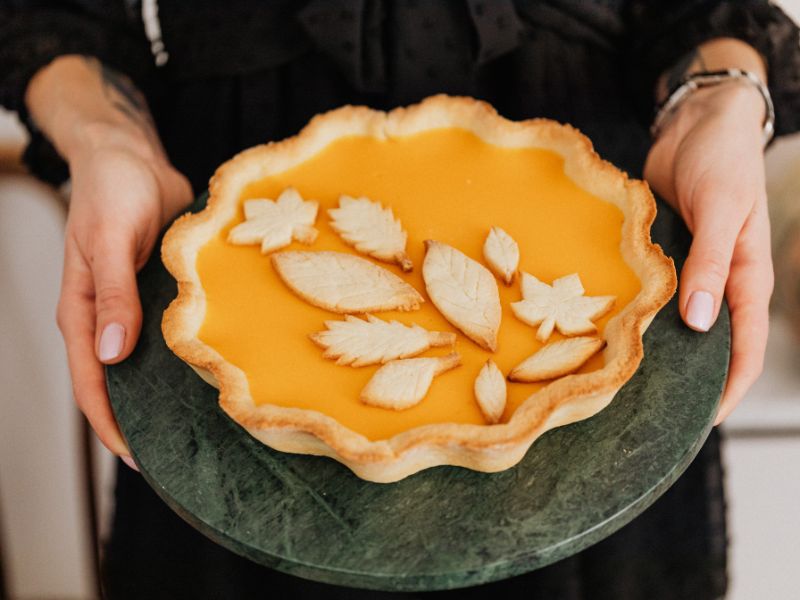
Despite using the best ingredients and following the recipe carefully, our pumpkin pies can still surprise us with cracks once they’re out of the oven. So how do we fix this? I’m sorry to say that once it cracks, there is no going back except to bake another pie. But don’t throw the cracked pie away. Let’s just hide those cracks.
Whipped Cream or Meringue Topping
Adding a soft layer of whipped cream or meringue to your pumpkin pie can be a game-changer. This fluffy topping does more than just cover up any cracks; it brings a delightful contrast to the pie’s creamy texture. Simply spread a thick layer over your cooled pie, making sure to cover any visible cracks.
Decorative Elements
Adding decorative touches to your pumpkin pie can make it even more special. If you have some leftover pie dough, why not shape it into fun designs like leaves or stars? After baking these shapes separately, you can place them on your pie for an extra flair. And for those pesky cracks? Dress them up with some edible garnishes. Edible flowers, a bit of shaved chocolate, or a dash of cinnamon hide those cracks and boost the pie’s look and taste. Here is more information on making pie crust decorations.
Serving Techniques
Slicing Tips
Using a sharp knife makes sure the slices are neat and helps hide any cracks a bit better. Even if the pie has cracks, neatly sliced pieces always look appealing on a plate.
Plating
Consider serving each slice with a scoop of ice cream or a drizzle of caramel sauce, turning the focus away from any cracks. Adding a mint leaf or some crushed nuts to the plate can make it look even nicer and give an extra tasty kick.
It’s okay to have cracks. Sometimes, things don’t go as planned, and that’s perfectly okay. A cracked pie is still a delicious pie. Remember, the love and effort you put into baking truly counts; I’m sure those enjoying your pie will appreciate it.
Learning and Moving Forward
Consider jotting down what might have gone wrong to avoid similar issues in the future. Don’t be afraid to try new techniques and recipes in your next baking adventure.
Cracks in a pumpkin pie can be depressing at first, but with a little creativity and a positive attitude, you can turn a minor failure into a delightful creation. After all, the flavors, shared moments, and love poured into baking make a pie special.
Final Thoughts

Baking a pumpkin pie can be fun, but sometimes we find cracks on top. Either we are overbaking, not mixing correctly, or not letting our pie cool correctly.
But don’t worry. Even if there are cracks, we can cover them with yummy toppings or fun decorations. So, continue to bake pumpkin pies and enjoy them, cracks, and all!
Does your pumpkin pie crack? Please leave me a comment below.
And As Always
Keep On Baking!
Taianne
Can you make a pumpkin pie with a carving pumpkin? Find out here.
Share the Love

I’m Taianne, the owner and operator behind We Are Baking. Baking my first cake at age 11 hooked me on creating sweet treats. Though my interest faded during childhood, it was rekindled when I married my apple pie-loving husband. I love trying new recipes, tweaking classics, and helping others learn the science and art of baking. I started We Are Baking to share tips, tricks, and favorite recipes I’ve discovered over the years. When not in the kitchen, I enjoy spending time with family and friends. My goal is to inspire others to embrace their creativity through baking. Feel free to contact me with any questions!
Taianne@wearebaking.com

